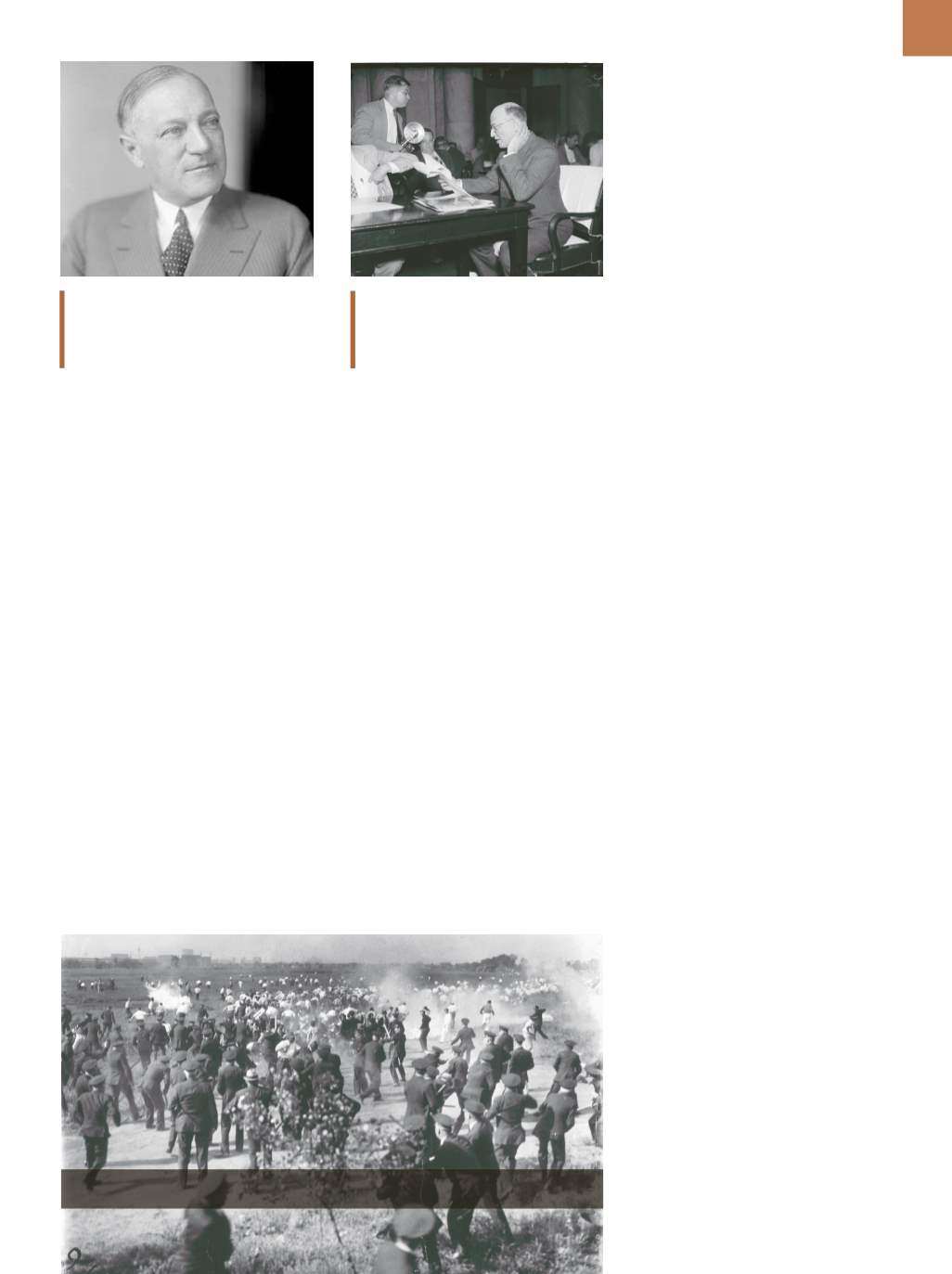

A D V A N C E D
M A T E R I A L S
&
P R O C E S S E S |
S E P T E M B E R
2 0 1 6
3 1
Senator Robert F. Wagner of New York,
author of the Wagner Act that allowed
workers to organize unions. Courtesy of
Library of Congress.
along with other Little Steel companies
began stockpiling guns, ammunition,
clubs, and tear gas. Management’s con-
tentious attitude toward labor had not
changed since the Homestead strike.
However, after the Wagner Act,
which legalized recruitment of union
members and encouraged elections,
the companies ignored the law against
worker resistance just as they had in
the past. The SWOC asked for a meet-
ing with Grace and Girdler to discuss
an agreement on holding elections to
determine if the majority of their work-
ers wanted a union or not. Girdler’s
answer was to close a plant in Canton,
Ohio, and lay off the workers. The SWOC
then met with Philip Murray where both
parties agreed to bargain over wages
and hours, but Murray refused to hold
elections or sign to recognize a union.
Grace, Girdler, and Murray were all in
violation of the Wagner Act.
The SWOC was prepared to act at
the Republic plant in South Chicago.
There were already 33,000 steelwork-
ers on strike at other Little Steel plants.
The company had prepared by trucking
in food and cots to house the workers
to be replaced with supervisors, man-
agers, and imported stand-ins for the
strikers. Republic intended to keep
operating during the strike.
MEMORIAL DAY MASSACRE
OF 1937
Toward the end of May 1937,
SWOC members attempted to demon-
strate at the gates in front of the plant
and each time they were turned away
by the police. On Sunday, May 30, the
men made a new attempt to reach the
gates. It was Memorial Day and wives
and children joined them along with
workers from other steel plants and vol-
unteers from the public. They were met
by a line of 200 police to prevent them
from reaching the gates. Strike leaders
tried to bargain with the police to let
them through for a peaceful picket line.
When talks broke down, things started
to escalate. As the crowd began to press
forward, they were met with tear gas
and gunshots into the air. As people
in the back kept pushing forward, the
police responded by throwing more tear
gas and firing into the crowd. Everyone
turned to escape as the gunfire con-
tinued along with beatings by police
clubs. The police continued to chase the
crowd, clubbing and shooting as men,
women, and children ran for their lives.
Ten men were killed and over 100
strikers needed medical attention.
Afterward, the police, newspapers, and
Republic Steel all blamed the workers
for the massacre. Later investigations
by Congress found that all of the dead
were shot in the back or side while try-
ing to flee the area. It was Congress that
finally published the true and detailed
facts of what happened during the
Memorial Day Massacre.
The strike failed and workers
returned to their jobs. Many were fired
for their union activities and some
were blackballed so they could never
find work in their communities. But
the SWOC did not accept the situation.
They turned to the federal government
and the courts for help. In the spring
of 1938, the NLRB found that Republic
Steel had violated the Wagner Act. They
ordered the company to rehire thou-
sands of workers with back pay, and to
award payment to the injured and the
families of those killed. The company
appealed the order but the court ruled
in favor of the NLRB.
During the next several years, the
union added enough workers to reach
its goal of more than 50% member-
ship. The NLRB supervised the election
and certified that the company had to
sign a contract with the union. Repub-
lic appealed to the courts again, but in
1942 the Supreme Court handed down
the decision that Republic was in viola-
tion of the Wagner Act. The Little Steel
industry finally had to give up its fight
to avoid union shops. The workers won,
but at a price they would never forget.
The whole affair would poison manage-
ment-labor relations for years to come.
For more information:
Charles R.
Simcoe can be reached at crsimcoe1@
gmail.com.
TomGirdler, president of Republic Steel,
testifying before the Senate Post Office
Committee in June 1937. Courtesy of
Library of Congress.
The Memorial Day Massacre in 1937 killed 10 men and woundedmore than 100.


















